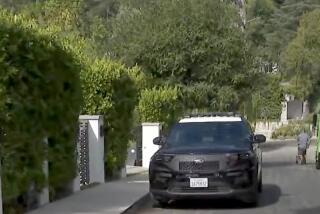El Monte Police to Turn Officers Into Neighborhood Chiefs
In the El Monte Police Department, there’s no such thing as too many chiefs.
Starting Saturday, police officers will step out of their cars and into neighborhoods. They will shake hands, strike up conversations and pass out personal cellular phone numbers.
In an experimental program, the Police Department has divided the city into 64 neighborhoods, each consisting of about five blocks, and assigned one officer to be chief of each neighborhood.
Their challenge will be to reduce crime by convincing people that to do this, all must help make their blocks friendlier and more aesthetically pleasing.
“We want to get rid of all the broken windows in the neighborhood,” said Police Sgt. Steve Krigbaum, who pitched the program.
With 116,000 residents, El Monte has large tracts of apartment houses and swaths of single-family homes on spacious lots in a rural atmosphere with roosters, horses and weathered barns.
Nevertheless, its urban areas make it one of the country’s densest cities. Garbage and grocery carts litter sidewalks, and gangs prey on several neighborhoods.
Officer Arturo Gutierrez, 25, grew up with some of the homeboys in the working-class Medina Court neighborhood, where he still lives with his parents and three siblings. As of Saturday, it’s also his new beat.
“I hope I can make a difference, Gutierrez said. “I totally expect to hear from my mom if I’m not doing a good job.”
Police Chief Ken Weldon said he expects some officers to grumble about the added responsibilities, such as asking people to cut their grass now and then. It’s not exactly what most officers signed up thinking they would do.
“There’s a lot of personal accountability,” Weldon said. “We expect our officers to hold town meetings to come up with solutions, to meet people on social issues and beautification issues and to really get involved in their personal lives. We expect officers to go door to door, introduce themselves and basically say, ‘I’m Ken Weldon, and I’m going to be your officer for, perhaps, the rest of my career.’ ”
When Krigbaum told Weldon about his idea, the chief replied: “It won’t work.”
Why not, Krigbaum asked. “Because it just makes too much sense,” Weldon recalls saying.
The idea of the Improving and Maintaining Public Awareness and Community Teamwork program is to turn police and residents into friends, capable of sharing information about crime and other issues as easily as they might chat about the summer heat.
Police want residents to understand that neighborhoods marred by vandalism, discarded trash, unkempt lawns and littered corners are magnets for crime.
They will cull volunteers from neighborhoods, churches, community groups and schools for various beautification efforts, Krigbaum said. From this, police hope, will come a lower tolerance for crime.
Hopefully, Krigbaum said, residents will also tell their police officers about people in the neighborhood who need help. “One-third of the people in this city live below the poverty line, but you wouldn’t believe how many people want to help others,” he said. “If you need things donated--a wheelchair, a refrigerator--you just ask and people will donate it.”
City officials said they expect an upsurge in requests for services, from graffiti removal to referrals to youth programs. Over time, they hope, the number of calls about crime will decrease.
“If the officers deal with their residents’ issues first, the way they’re supposed to, other resources won’t be taxed or overwhelmed,” said Sgt. Santos Hernandez.
Weldon has high hopes.
“The officers will hopefully get really involved with the residents and establish friendships. They’ll go to parties and will be asked to be godfathers,” Weldon said. “I’d like for our officers to naturally gravitate to ‘their’ neighborhoods on their off days.... I think we’ll have better officers, better people and better communities. I don’t see why this can’t work.”
More to Read
Sign up for Essential California
The most important California stories and recommendations in your inbox every morning.
You may occasionally receive promotional content from the Los Angeles Times.











